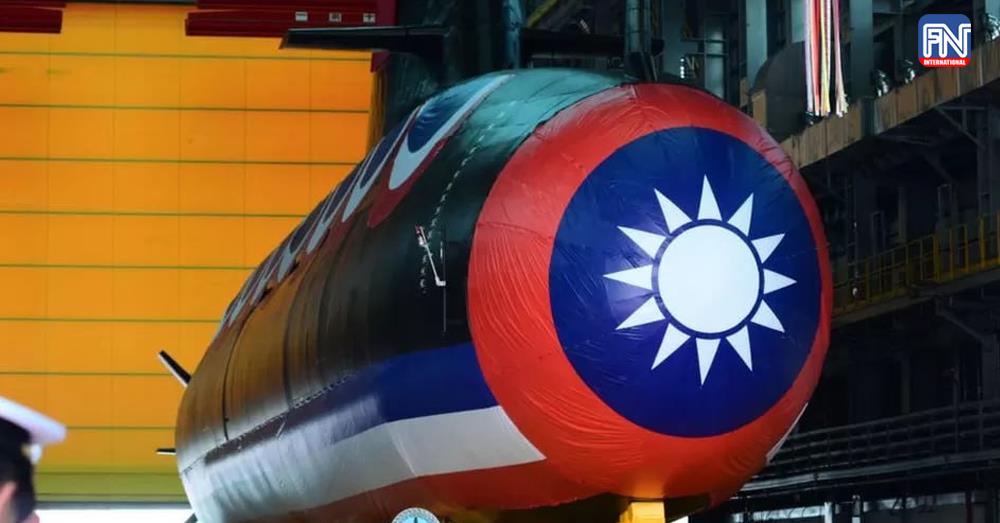TAIPEI, Sep 28 (AFP) - Taiwan unveiled its first domestically built submarine on Thursday, with the massively outgunned island seeking to bolster its defences against China.
China claims self-ruled Taiwan as its territory, and has in the past year stepped up military and political pressure, ramping up the number of warplane incursions around the island while diplomatically isolating it.
Taiwan has increased defence spending -- allotting a record $19 billion for 2024 -- to acquire military equipment, particularly from its key ally the United States, but its quest to obtain a submarine has faced obstacles.
President Tsai Ing-wen -- strongly opposed by Beijing for her refusal to accept China's authority over the island -- launched a submarine programme in 2016 with the aim of delivering a fleet of eight vessels.
The first prototype, named "Hai Kun" in Chinese, meaning "mythical sea creature", and dubbed "Narwhal" in English, was unveiled Thursday at a ceremony in the southern port city of Kaohsiung.
"History will forever remember this day," declared Tsai, standing in front of the vessel draped in Taiwan's flag colours.
"In the past, building submarines domestically was considered 'Mission Impossible'. But today, a submarine designed and built by our own people is right in front of everyone -- we did it," she said.
Cheng Wen-lon, chairman of submarine manufacturer CSBC Corp -- which specialises in shipping containers and military vessels -- said the seven-year building process had the team working around the clock, calling it "a magical weapon in asymmetric warfare".
Hai Kun measures 80 metres in length, has a displacement weight of about 2,500 to 3,000 tons, and boasts combat systems and torpedoes sourced from the US defence company Lockheed Martin.
It will now undergo sea trials, with Tsai saying Hai Kun would be operational by 2025 -- though some defence analysts say it could take longer.
Taiwan's navy currently has two working submarines, Swordfish-class vessels bought from the Netherlands in the 1980s.
Washington initially approved an offer in 2001 to supply eight conventional submarines, but the sale never materialised.
Over the same period, China has built itself one of the world's largest navies, with nuclear-powered submarines and aircraft carriers.
China has about 60 submarines, six of which are nuclear-powered and armed with ballistic missiles, according to the US Department of Defense -- a clear numbers disadvantage compared to Taiwan's fledgling fleet.
But Jiang Hsin-biao at Taiwan's Institute for National Defense and Security Research said deploying submarines at major choke points -- like the Bashi Channel and the Okinawa waterway -- would be enough to cause problems for China.
"It can disrupt the People's Liberation Army's attempt to encircle and attack Taiwan from the east and west," Jiang said, referring to China's military.
"What surface ships fear most is attacks from underwater... (A submarine) can make the enemy's formation hard to defend to serve as a deterrence."
Ben Lewis, a US-based independent expert on the Chinese military's movements around Taiwan, said the submarine will also pose a risk to China's amphibious assault and troop transport capabilities.
"They have practised extensively the use of civilian vessels to augment their existing troop delivery platforms, and a submarine could wreak havoc on vessels not designed for naval warfare."
But Zivon Wang, a military analyst at Taipei-based think tank the Chinese Council of Advanced Policy Studies, said there is still a long way to go before it is "combat capable".
"The launch... does not mean Taiwan will become very powerful right away but it is a crucial element of Taiwan's defence strategy and a part of our efforts to build deterrence capabilities."
China's state-run Global Times on Monday published an op-ed saying Taiwan's submarine deployment plan to block the PLA was "daydreaming".

Photo from Getty Images